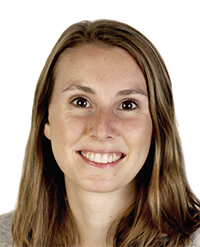Editorial issue 38 Editorial article

Without these experiences, I might not have followed the path that has led me to where I am today: the Science in School office at the European Molecular Biology Laboratory, nestled in the scenic hills of Heidelberg, Germany.
This issue, my first as a Science in School editor, is full of ideas to enthuse your students and inspire the next generation of scientists. Explore the neurological phenomenon of synaesthesia, where letters or numbers evoke visual sensations such as colours, sounds and smells, or the revolutionary gene-editing technique, CRISPR-Cas9. Delve deep inside our planet and discover how scientists are reconstructing the behaviour of Earth’s mantle, or travel back in time to tackle one of the big remaining mysteries in animal evolution.
If you prefer hands-on activities, learn how to bring robotics into a chemistry lesson or create a cellophane membrane to simulate a neuron in the classroom. For something closer to home, how about exploring the nature of fire or predicting the weather using thermodynamics? And for younger students, there’s a fun activity to find out what happens inside magnets.
To spark your own imagination, meet Andy Brunning, the teacher and mastermind behind the chemistry graphics of Compound Interest, or hear from a Finnish physics teacher about his students’ sky-high adventures in ESA’s CanSat competition in Portugal.
We hope you enjoy using these resources. Do share your experiences, photos and even videos with us on social media, or by dropping us an email (editor@scienceinschool.org) – we love to hear how you use our articles and how your students respond.
Lastly, I’m delighted to be part of the Science in School team, of which you – our readers, authors, reviewers and translators – are a fundamental part. In 2017, I hope to meet some of you at forthcoming workshops, festivals and conferences, and I look forward to hearing your ideas for the future of the journal.





